Migrants key to doubling CBD population by 2036
Lord Mayor Jane Lomax-Smith says attracting more migrant families to live in city apartments will be key to preserving Adelaide’s amenity, as Adelaide City Council maps out how a predicted population surge will shape the CBD’s skyline.

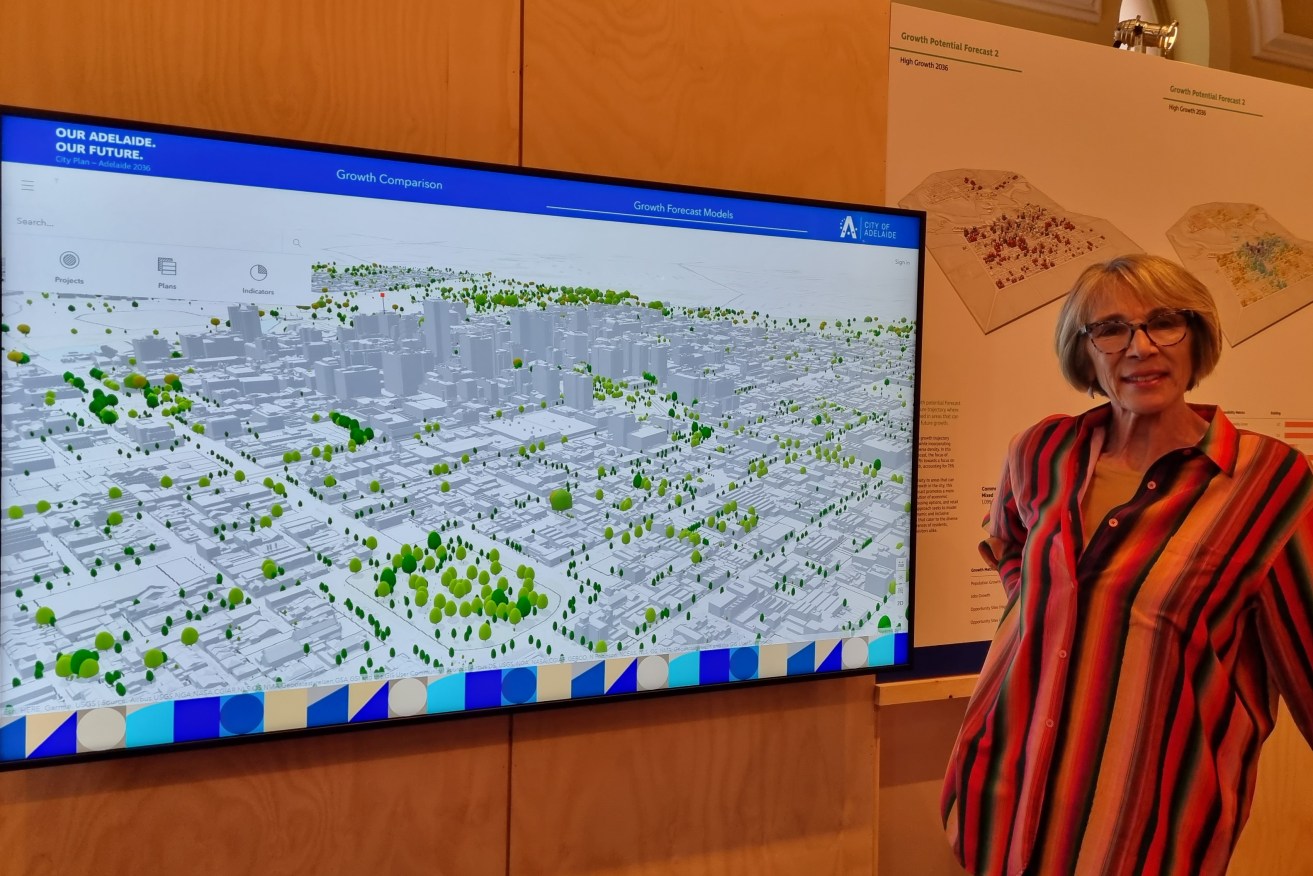
Lord Mayor Jane Lomax-Smith next to a tree canopy map in the council's City Plan Studio. Photo: Thomas Kelsall/InDaily
Adelaide City Council’s draft 2024-2028 strategic plan, which is yet to be approved by councillors, aims to increase the proportion of family households in the City of Adelaide from 12.5 per cent to 15 per cent.
According to 2021 census data, most city residents live alone (40.8 per cent) or with their partner and no children (25.6 per cent). Couples with children (8 per cent) and single-parent families (4.5 per cent) make up a much lower proportion of city households.
State Planning Commission chair Craig Holden warned councillors earlier this month that higher housing costs in the CBD mean it’s “unlikely you’re going to get Mum, Dad and the three kids moving into a house in the city”.
“It’s very difficult to build a three-bedroom family home, single-storey in the city to compete with somewhere 10kms from here – you’re talking twice the price,” Holden said, later adding that people in their 30s, 40s and 50s typically aspire to suburban homes with a backyard.
But the Lord Mayor disagrees with Holden’s assessment, telling InDaily on Friday: “I think that if you’re getting migrants, they can cope with apartments.”
“The problem is that if you’re used to a quarter-acre block, of course you don’t want to live in the city,” she said.
“But if you’re a migrant and you come from Delhi or London or New York – eh, what’s the problem?
“And a lot of our population growth is going to be international.”
The comments come as council ramps up work on its draft “City Plan”, which is intended to guide the growth and development of the city and North Adelaide until 2036.
In a bid to get expert opinions on the plan, council this month set up a City Plan studio with interactive maps showing what the city could look like in 2036 under low and high population growth scenarios.
Both the Lord Mayor and council’s yet-to-be-adopted strategic plan have set targets to increase the city’s population from around 26,000 currently to 50,000 by 2036.
Under that scenario, the interactive maps identify areas around East and West Terrace as land that could “leverage their proximity to the commercial core” to accommodate more residents.
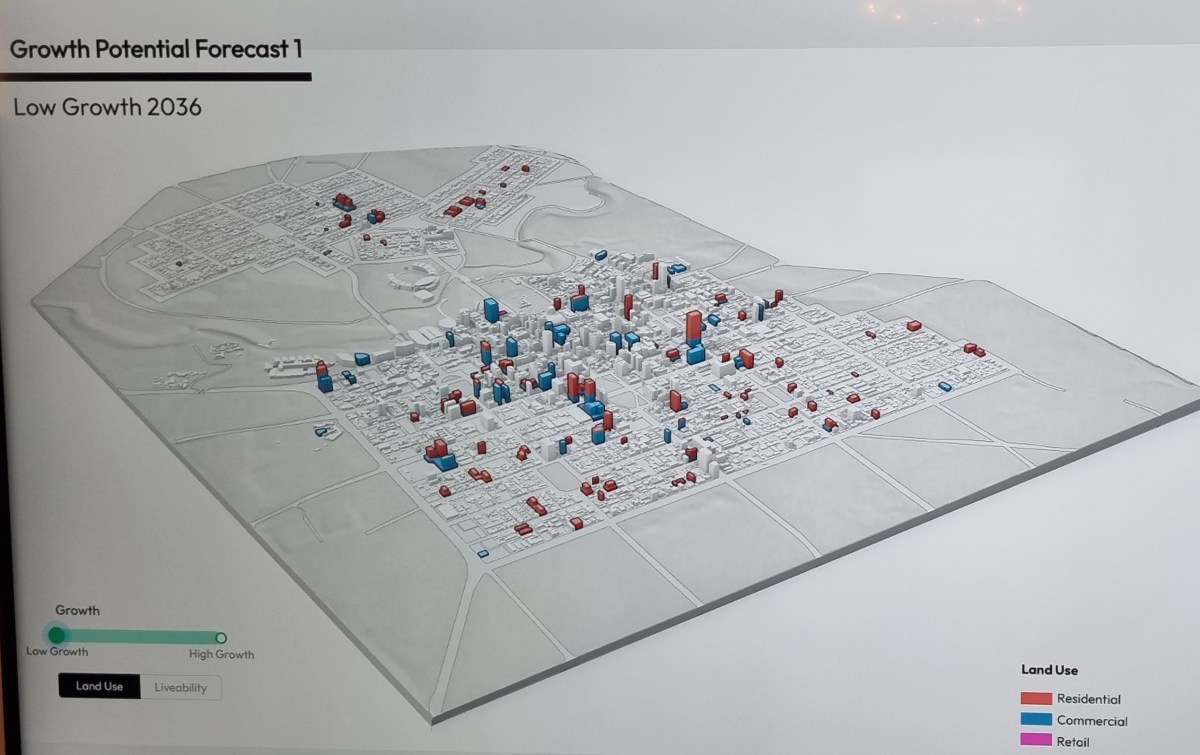
A future map of Adelaide in 2036 under a “low growth” population forecast (36,000 residents by 2036).
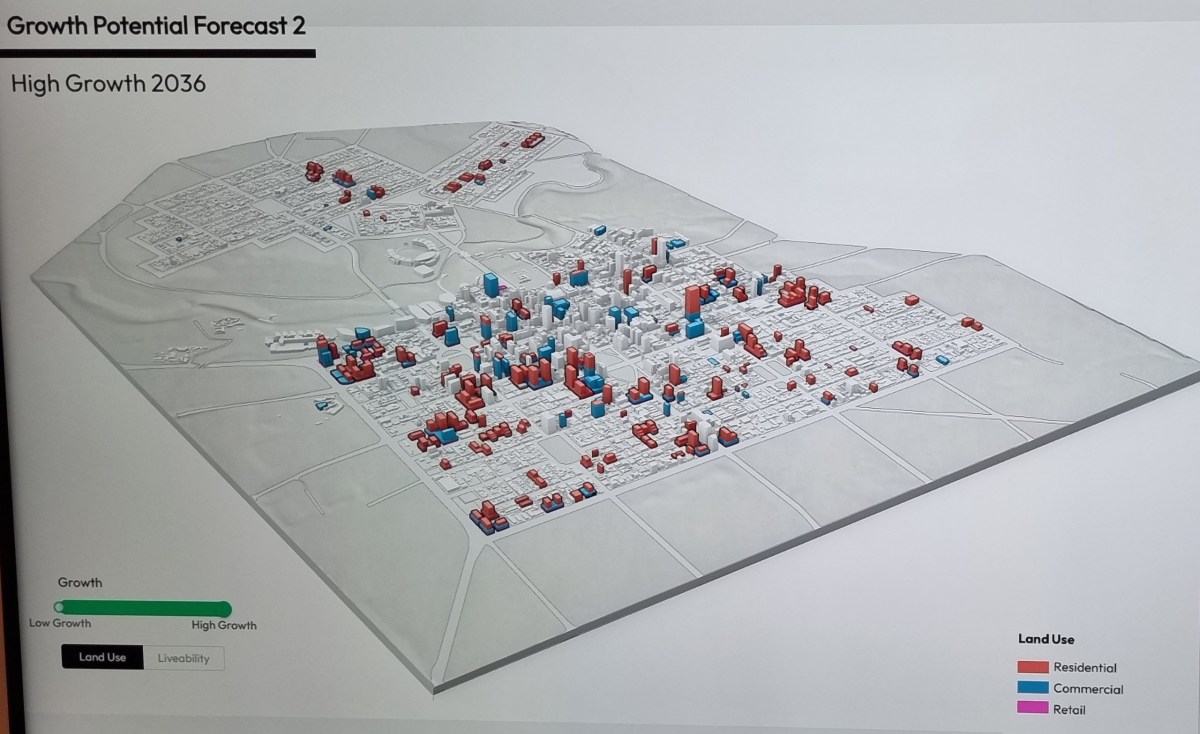
A future map of Adelaide in 2036 under a “high growth” population forecast (50,000 residents by 2036).
“The High Growth 2036 demonstrates a shift in development focus towards West Terrace, East Terrace and Grote Street, which dispenses density throughout the city,” the council’s high growth map states.
This scenario will also require 1,352,000 square metres of new housing space in the City of Adelaide, compared to only 530,000 square metres under the current population growth trajectory of 36,000 people by 2036.
A separate council report published earlier this year projected that three dozen 36-storey apartment towers could be needed to accommodate 46,000 city residents by 2041.
Lomax-Smith said those forecasts were predicated on the City of Adelaide’s current average household size of 1.7 persons per dwelling.
She argues that increasing this to around two persons per dwelling will “save the city”.
“What we’ve gone through is a massive demographic shift that has reduced the number of people in a dwelling,” she said.
“So, whilst we might have increased the number of dwellings in the city by, say, 9000, we’ve only increased the population by about 10,000 because they’re all single unit, student apartments.
“So, what this model allows us to do is if we think we might end up with double the population, we can double the population with a quarter of the dwellings if we stack people in the flats.”
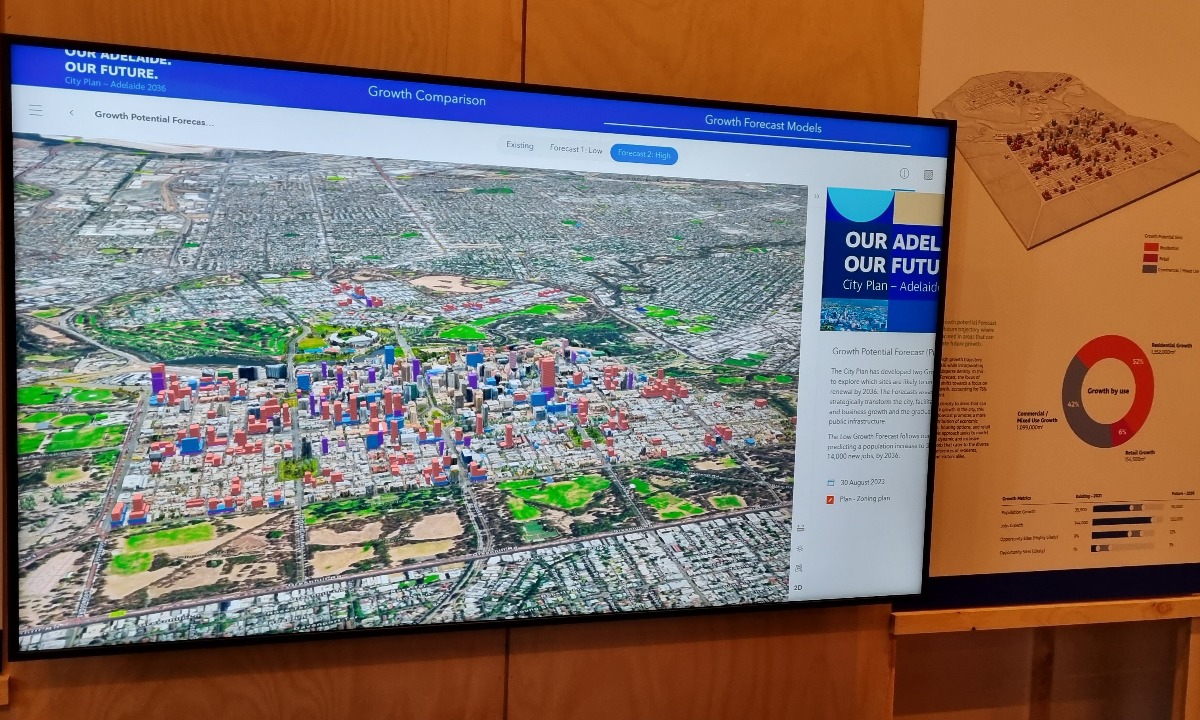
Another City Plan map of Adelaide under a high growth scenario. Photo: Thomas Kelsall/InDaily
Council’s City Plan also comes as the State Government consults on the next Greater Adelaide Regional Plan, which has identified a need to find space for 100,000 new homes to accommodate South Australia’s future population growth.
Asked how many of the 100,000 houses it would be reasonable for the City of Adelaide area to hold, Lomax-Smith said: “We can’t carry it all.”
“We’ve said we could go for 25,000, that would be a miracle if we managed to get that in the short term. If we did it to 2036 it would be a pretty good achievement.
“But you want to protect the heritage and you want to protect the liveability – I mean it’s the amenity that’s the problem.
“And that’s why I think we don’t want to have single unit dwellings, because if you could just get… 2 or 2.1 (persons per dwellings), it will save the city.”
West Terrace car yards in council’s sights
Future zoning changes to encourage more housing along key roads – such as West Terrace – could be one of the outcomes of the City Plan, the council says.
The Lord Mayor has previously raised issues with the number of car dealerships on West Terrace, arguing the 10-lane boulevard with its park lands frontage should be “prime residential real estate”.
“Things you shouldn’t have in the city are car yards, data centres and things that don’t accommodate people,” she said.
“Data centres are a low value use of city space, and this [pointing on a map to a used car dealership located on a large West Terrace corner block] is ridiculous.”
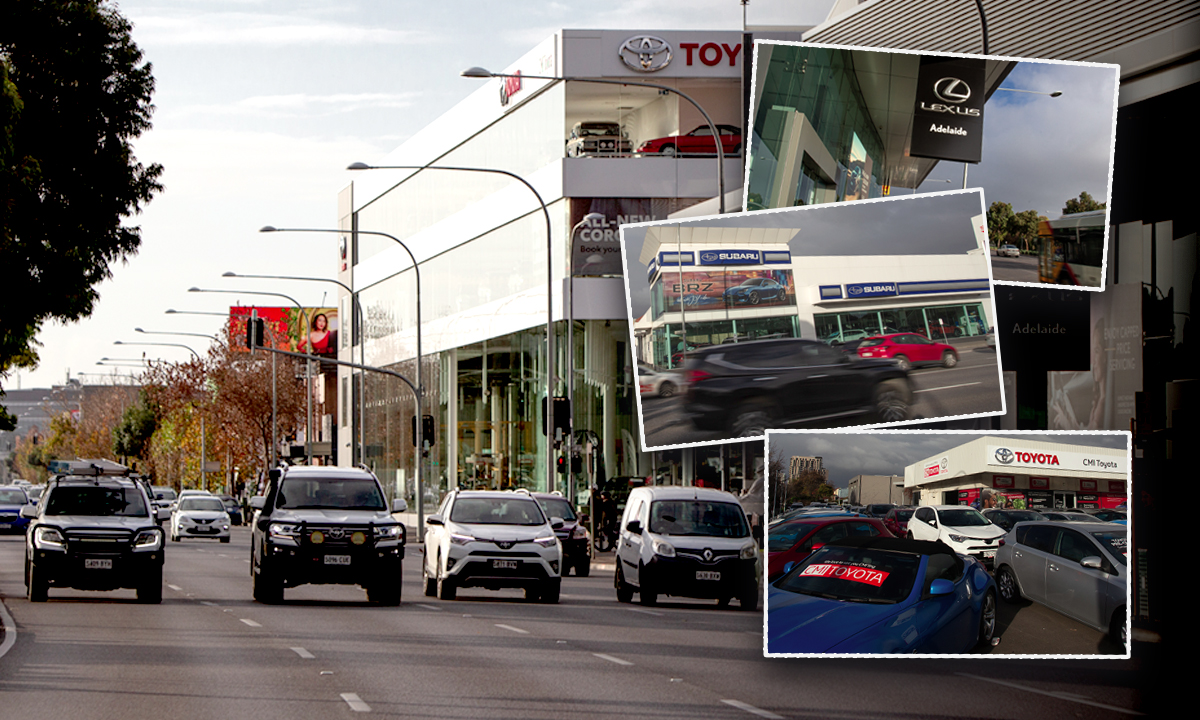
Adelaide’s Lord Mayor says West Tce should be prime residential real estate but is instead dominated by car showrooms. Photos: Brett Hartwig/InDaily
But the prospect of West Terrace and its 10 car dealerships being transformed into a residential boulevard remains far off, with the land currently locked off with private owners and primarily zoned for non-residential ground use.
Ilia Houridis, council’s director, city shaping, said the City Plan was an opportunity to outline a long-term view of the desired land use around areas like West Terrace
He said council “can’t force a move but we can suggest what the next move should be”.
“You can shift a planning law whilst they’re here now,” Houridis said.
“Therefore, a current property owner or a future owner understands the intent that’s being sought and then is actually supported for a change of use when the time comes.
“If we did change the planning laws and say this for us we envisage is residential only or mixed-use residential – and then you talk to public amenity across the road and you’ve got excellent park spaces, open space that a car park is probably not using that a residential community would.”
In an interview with InDaily last month, Planning Minister Nick Champion agreed that West Terrace was an enticing location for housing but cautioned that existing landowners have land use rights.
“Any boulevard like West Terrace or any of the other boulevards that face the park lands are really terrific sites from an amenity point of view, because you overlook what is the jewel in Adelaide’s crown,” he said.
“And so, in that sense, I agree with the Lord Mayor and others, that if you were just set out again, you would probably think very carefully about all of that interaction with park lands and anything overlooking the park lands seems to me to have an inherent value and quality to it in terms of the views.
“That’s true of Greenhill Road, it’s true of nearly any boulevard that faces onto the park lands, and we’re seeing some great developments overlooking and taking advantage of that – and I think that that is the future.
“But of course, individual landowners have their own land use rights and they’re ultimately the ones making investment decision on their land – I think we have to be cognisant of that as well.”
Under the City Plan’s high population growth scenario, housing is forecast to account for 52 per cent of future land use growth, compared to 42 per cent commercial/mixed-use and 6 per cent retail.
The low growth scenario only projects 35 per cent of land use growth to be residential, compared to 61 per cent commercial/mixed-use and 4 per cent retail.
Council is due to go out to public consultation on its draft City Plan in January ahead of completion in June 2024.




